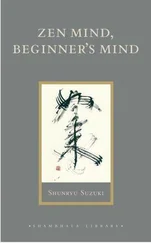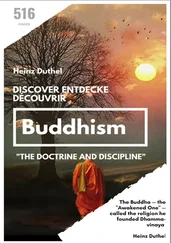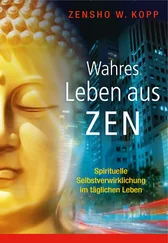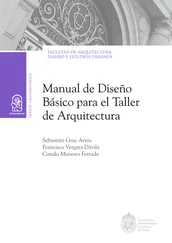Teitaro Suzuki - Manual of Zen Buddhism
Здесь есть возможность читать онлайн «Teitaro Suzuki - Manual of Zen Buddhism» весь текст электронной книги совершенно бесплатно (целиком полную версию без сокращений). В некоторых случаях можно слушать аудио, скачать через торрент в формате fb2 и присутствует краткое содержание. Жанр: Религиоведение, Религия, Руководства, на английском языке. Описание произведения, (предисловие) а так же отзывы посетителей доступны на портале библиотеки ЛибКат.
- Название:Manual of Zen Buddhism
- Автор:
- Жанр:
- Год:неизвестен
- ISBN:нет данных
- Рейтинг книги:3 / 5. Голосов: 1
-
Избранное:Добавить в избранное
- Отзывы:
-
Ваша оценка:
- 60
- 1
- 2
- 3
- 4
- 5
Manual of Zen Buddhism: краткое содержание, описание и аннотация
Предлагаем к чтению аннотацию, описание, краткое содержание или предисловие (зависит от того, что написал сам автор книги «Manual of Zen Buddhism»). Если вы не нашли необходимую информацию о книге — напишите в комментариях, мы постараемся отыскать её.
Manual of Zen Buddhism — читать онлайн бесплатно полную книгу (весь текст) целиком
Ниже представлен текст книги, разбитый по страницам. Система сохранения места последней прочитанной страницы, позволяет с удобством читать онлайн бесплатно книгу «Manual of Zen Buddhism», без необходимости каждый раз заново искать на чём Вы остановились. Поставьте закладку, и сможете в любой момент перейти на страницу, на которой закончили чтение.
Интервал:
Закладка:
“Subhuti, if there have been good men and good women in the last five hundred years who hold, recite, and learn this sutra, the merit they attain thereby I cannot begin to enumerate in detail. If I did, those who listen to it would lose their minds, cherish grave doubts, and not believe at all how beyond comprehension is the significance of this sutra and how also beyond comprehension the rewards are.” [4]
18. The Buddha said to Subhuti: “Of all beings in those innumerable lands, the Tathagata knows well all their mental traits. Why? Because the Tathagata teaches that all those mental traits are no-traits and therefore they are known to be mental traits. Subhuti, thoughts [5]of the past are beyond grasp, thoughts of the present are beyond grasp, and thoughts of the future are beyond grasp.”
23. “Again, Subhuti, this Dharma is even and has neither elevation nor depression; and it is called supreme enlightenment. Because a man practises everything that is good, without cherishing the thought of an ego, a person, a being, and a soul, he attains the supreme enlightenment. Subhuti, what is called good is no-good, and therefore it is known as good.”
26. “Subhuti, what do you think? Can a man see the Tathagata by the thirty-two marks [of a great man]?”
Subhuti said: “So it is, so it is. The Tathagata is seen by his thirty-two marks.”
The Buddha said to Subhuti, “If the Tathagata is to be seen by his thirty-two marks, can the Cakravartin be a Tathagata?”
Subhuti said to the Buddha: “World-honoured One, as I understand the teaching of the Buddha, the Tathagata is not to be seen by the thirty-two marks.”
Then the World-honoured One uttered this gatha: “If any one by form sees me, By voice seeks me, This one walks the false path, And cannot see the Tathagata.”
29. “Subhuti, if a man should declare that the Tathagata is the one who comes, or goes, or sits, or lies, he does not understand the meaning of my teaching. Why? The Tathagata does not come from anywhere, and does not depart to anywhere; therefore he is called the Tathagata.
32. “How does a man expound it for others? When one is not attached to form, it is of Suchness remaining unmoved. Why?
“All composite things ( samskrita )
Are like a dream, a phantasm, a bubble, and a shadow,
Are like a dew-drop and a flash of lightning;
They are thus to be regarded.”
IV. THE LANKAVATARA SUTRA
This sutra is said to have been given by Bodhidharma to his chief disciple Hui-k'e as containing the essential teaching of Zen. Since then it has been studied chiefly by Zen philosophers. But being full of difficult technical terms in combination with a rugged style of writing, the text has not been so popular for study as other Mahayana sutras, for instance, the Pundarika , the Vimalakirti , or the Vajracchedika .
The chief interlocutor is a Bodhisattva called Mahamati, and varied subjects of philosophical speculation are discussed against a background of deep religious concern. The topic most interesting for the reader of this book is that of svapratyatmagati , i.e. self-realization of the highest truth.
Some of the terms may be explained here: “Birth and death” ( samsara in Sanskrit) always stands contrasted to “Nirvana”. Nirvana is the highest truth and the norm of existence while birth and death is a world of particulars governed by karma and causation. As long as we are subject to karma we go from one birth to another, and suffer all the ills necessarily attached to this kind of life, though it is a form of immortality. What Buddhists want is not this.
“Mind only” ( cittamatra ) is an uncouth term. It means absolute mind, to be distinguished from an empirical mind which is the subject of psychological study. When it begins with a capital letter, it is the ultimate reality on which the entire world of individual objects depends for its value. To realise this truth is the aim of the Buddhist life.
By “what is seen of the Mind-only” is meant this visible world including that which is generally known as mind. Our ordinary experience takes this world for something that has its “self-nature”, i.e. existing by itself. But a higher intuition tells us that this is not so, that it is an illusion, and that what really exists is Mind, which being absolute knows no second. All that we see and hear and think of as objects of the vijnanas are what rise and disappear in and of the Mind-only.
This absolute Mind is also called in the Lankavatara the Dharma of Solitude ( vivikta-dharma ), because it stands by itself. It also signifies the Dharma's being absolutely quiescent.
There is no “discrimination” in this Dharma of Solitude, which means that discrimination belongs to this side of existence where multiplicities obtain and causation rules. Indeed, without this discrimination no world is possible.
Discrimination is born of “habit-energy” or “memory”, which lies latently preserved in the “alayavijnana” or all-conserving consciousness. This consciousness alone has no power to act by itself. It is altogether passive, and remains inactive until a particularizing agency touches it. The appearance of this agency is a great mystery which is not to be solved by the intellect; it is something to be accepted simply as such. It is awakened “all of a sudden”, according to Asvaghosha.
To understand what this suddenness means is the function of “noble wisdom” ( aryajnana ). But as a matter of experience, the sudden awakening of discrimination has no meaning behind it. The fact is simply that it is awakened, and no more; it is not an expression pointing to something else.
When the Alayavijnana or the all-conserving consciousness is considered a store-house, or better, a creative matrix from which all the Tathagatas issue, it is called “Tathagata-garbha”. The Garbha is the womb.
Ordinarily, all our cognitive apparatus is made to work outwardly in a world of relativity, and for this reason we become deeply involved in it so that we fail to realize the freedom we all intrinsically possess, and as a result we are annoyed on all sides. To turn away from all this, what may psychologically be called a “revulsion” or “revolution” must take place in our inmost consciousness. This is not however a mere empirical psychological fact to be explained in terms of consciousness. It takes place in the deepest recesses of our being. The original Sanskrit is paravrittasraya .
The following extracts are from my English translation (1932) of the original Sanskrit text edited by Bunyu Nanjo, 1923.
XVIII
Further, Mahamati, those who, afraid of sufferings arising from the discrimination of birth and death, seek for Nirvana, do not know that birth and death and Nirvana are not to be separated the one from the other; and, seeing that all things subject to discrimination have no reality, imagine that Nirvana consists in the further annihilation of the senses and their fields. They are not aware, Mahamati, of the fact that Nirvana is the Alayavijnana where a revulsion takes place by self-realization. Therefore, Mahamati, those who are stupid talk of the trinity of vehicles and not of the state of Mind-only where there are no shadows. Therefore, Mahamati, those who do not understand the teachings of the Tathagatas of the past, present, and future, concerning the external world, which is of Mind itself, cling to the notion that there is a world outside what is seen of the Mind and, Mahamati, go on rolling themselves along the wheel of birth and death.
XIX
Further, Mahamati, according to the teaching of the Tathagatas of the past, present, and future, all things are unborn. Why? Because they have no reality, being manifestations of Mind itself; and, Mahamati, as they are not born of being and non-being, they are unborn. Mahamati, all things are like the horns of the hare, horse, donkey, or camel, but the ignorant and simple-minded, who are given up to their false and erroneous imaginations, discriminate things where they are not; therefore, all things are unborn. That all things are in their self-nature unborn, Mahamati, belongs to the realm of self-realization attained by noble wisdom, and does not belong essentially to the realm of dualistic discrimination cherished by the ignorant and simple-minded.
Читать дальшеИнтервал:
Закладка:
Похожие книги на «Manual of Zen Buddhism»
Представляем Вашему вниманию похожие книги на «Manual of Zen Buddhism» списком для выбора. Мы отобрали схожую по названию и смыслу литературу в надежде предоставить читателям больше вариантов отыскать новые, интересные, ещё непрочитанные произведения.
Обсуждение, отзывы о книге «Manual of Zen Buddhism» и просто собственные мнения читателей. Оставьте ваши комментарии, напишите, что Вы думаете о произведении, его смысле или главных героях. Укажите что конкретно понравилось, а что нет, и почему Вы так считаете.








